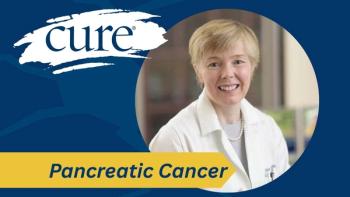
Clinicians ‘Game Planning’ for Pediatric Cancer Drug Shortages
A childhood cancer specialist discusses how oncology drug shortages may affect the treatment of children with cancer.
Dr. Mallorie B. Heneghan, an assistant professor of pediatrics at the University of Utah and in the division of pediatric hematology/oncology at Primary Children´s Medical Center, told CURE® that she has been seeing a lot of the chemotherapy drug shortage lately — which poses a specific problem for her pediatric patients with blood cancers.
“That's kind of that kind of catch 22-of pediatric cancer, (it) is rare and so we're not kind of a big market space for pharmaceutical companies,” she said. “But I would say that it's so critical that we have the right drugs to treat our patients, because we have such great outcomes. I'm specifically a leukemia/ lymphoma doctor, and with good chemotherapy medications we're seeing patients going on to live decades. And so, making sure that we have the tools are available (is important), do we have access to them?
“So, I can think of a couple different chemotherapy medications off the top of my head, then unfortunately, we are in a place that we've been able to secure supply for our patients, but we've had certainly several conversations as an institution about game-planning for what happens if we're not able to secure that. And so, we've had to be very proactive about that, which takes time and energy on everyone's behalf. And I hope we can continue to do that so that we can secure access for our patients. But I do worry.”
For instance, Heneghan said, there is currently a shortage of vinblastine (which has recently shown
More CURE® coverage of the chemotherapy shortage:
Chemo Shortage Improved But Remains ‘Ongoing Crisis’ Patient Concerns Around Chemo Shortage Are ‘Valid,’ Pharmacist Says The Shared Responsibility to Prevent, Prepare for and Manage Drug Shortages Patients Respond to the Ongoing Chemo Drug Shortage Here’s How One Cancer Center Is Handling the Chemo Shortage Chemo Drug Shortage Requires a ‘Holistic Solution’ Expert Discusses Chemo Shortage: ‘Likely to Last’ 3 to 4 Months Expert Identifies Chemo Shortage as a 'Simple Tragedy of US Health System’
“Those are both critical drugs in our treatment plan,” she said. “And I think I've heard the methotrexate shortage is over now, but that was certainly one that was very scary to me (as) someone that treats a lot of leukemia (and) again, a drug (that) we know really works. And unfortunately, if we just can't get access to it, we can't treat our patients.”
For more news on cancer updates, research and education, don’t forget to





